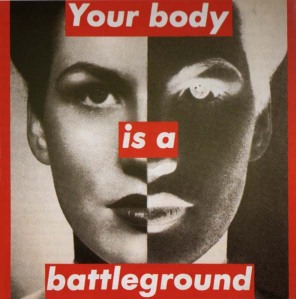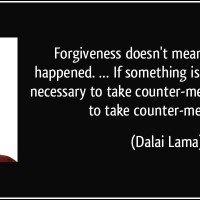
As many people who visit this blog already know, in January this year I received a letter from Melinda Tankard Reist’s lawyer Ric Lucas of Colquhoun Murphy, threatening me with defamation action unless I removed material from my blog about his client, publicly apologised, and paid the expenses Reist had incurred as a consequence of threatening to sue me. There’s an entire category on No Place for Sheep titled “Defamation Threat” that records these events and their interesting consequences, in particular the “Streisand Effect.”
It now turns out that in the same week, Tankard Reist also instructed Ric Lucas to send a defamation threat to Catherine Manning, a former colleague of Reist’s who had decided to leave the group.The same demands were made: that Manning retract comments made on her Facebook page, publicly apologise and pay Reist’s costs.
Defamation threats remain active for twelve months, so Catherine and myself can be sued by Reist at any time until January 2013.
Like Catherine, I’m very wary of these things declining into unseemly playground brawls, however, a pattern is emerging of bullying, and attempts to silence differing points of view through the use of threats, including contacting the employers of those Reist feels have offended her.
I’m in possession of similar information from other people who at this stage don’t want to be named.
Manning recently
wrote a piece for Mamamia in which she challenged the usefulness of Reist’s Collective Shout campaigns against girls’ and women’s clothing choices. In the comments thread Manning revealed plans for a proposed fundraiser that involved guests dressing up in the style Collective Shout aggressively opposes (my post
“How Collective Shout shames women and girls” is relevant here).
The comments left by Tankard Reist supporters, and some responses by Manning and others, have, interestingly, been deleted from the Mamamia site. One of these deleted comments is from Sarah McMahon, Chair of Collective Shout, who writes:
Comments on this thread have been brought to our attention.
We feel it is important to advise that the account of the proposed fundraiser for our organisation posted by Catherine Manning above contains significant inaccuracies.
We do not feel it is professional to further engage on this matter in this forum and we will not be entering into further correspondence.
I received the following letter from Catherine yesterday. It includes emails that confirm Collective Shout had indeed been planning a dress-up fundraiser where guests were invited come, as Reist puts it, dressed as “hot nurses” and “pimps.”
The comments deleted from Mamamia appear below the letter.
Dear Jennifer,
I should be outraged over the reaction of Collective Shout and some of their supporters to my ‘shorts’ article and your subsequent post but I’m actually a little bemused and a lot relieved. Over the past two years, I have been bullied and undermined both personally and professionally by some of those I once campaigned alongside. This includes clandestine investigations amongst friends, threats of withdrawal of support for the company I worked for whilst I was under their employ, and aggressive emails to me directly. It seems they don’t like the company I keep, nor the things I have to say that challenge their views.
In fact, like you, I also hold a threatening legal letter from Melinda Tankard Reist and her lawyers (dated 3/1/12) for citing the reason I was tossed from the Collective Shout fold, and lamenting that the fear and silencing of other voices stifles progress. Of course I have documentary evidence and witnesses to support my claims. Up until now I have remained publicly silent about my treatment, aware that by revealing their antics, my summary of events may be reduced to playground politics. However, in light of their recent public outbursts, I feel it timely and necessary to defend my reputation.
As well as the Mamamia comments (since removed from their website) I am also providing part of an email thread between myself and Melinda Tankard Reist about the CS FUNdraiser for those new and vocal recruits at Collective Shout, who may not have the full story. Slut-shaming isn’t limited to just some within Collective Shout, hence my not naming any individual or group in my article, but it was they who came out swinging in response, and ultimately forced me to share this.
Catherine Manning via email 9/7/1o 10:55am …I just wanted to send my thoughts about the ‘sexualisation theme’ though, as I’m concerned it could be used against us. I understand the intended ‘humour/fun’ in encouraging people to dress up, but I think it’s risky in that when we condemn Lynx for ‘taking the piss’, it seems hypocritical for us to say we’re just doing this for ‘fun’/parody. I personally just don’t think it’s the right event for it, if you want the campaign to be taken seriously. I also worry about any media attention the event might attract – if there are any photos taken for papers, etc, upon first glance, assumptions will be made and minds made up before reading the ‘context’.
Melinda Tankard Reist via email 9/7/10 11:11am …‘appreciate your thoughts on this…..I have put a halt to the flyer that was about to go out and have insisted the wording be changed. I want to focus on those doing the objectifying – the culture and the industry, not on individual women. Doing what I can to minimise the risk. I hope it’s not too late’
I was then asked to contact the organiser to advise her to reject the theme, which I obliged.
Melinda Tankard Reist via email 9/7/10 12:59pm ….‘Thanks for anything you can do to take the heat out of this.’
And the ‘damage control’ in a CS statement:
‘It has come to our attention that we have not communicated the intention of this event as clearly as we could have. The intention was not to poke fun at individual women who engage in particular beauty practices, or an invitation for people to come as ‘hot nurses’ and ‘pimps’ but to highlight the ridiculous pressure placed on women to change everything about themselves, in order to fit into our culture’s narrow definition of beauty.
What we had pictured was people dressing up in an exaggerated way that highlights this pressure and takes it to a ridiculous extreme, hence the ‘humorous protest’ aspect of the event. It was intended to be a jab at the beauty industry, the diet industry and the fashion industry, not at women. We wanted it to be funny, not derogatory.’ The Collective Shout team 9/7/10
As I stated, no matter how it was spun, it didn’t sit right with me and I began to question, but I soon learnt that questioning ‘the experts’ was not on.
The issues I raised in my article about my child sex abuse, are far bigger and more important than this sideshow Collective Shout, Julie Gale of Kids Free 2B Kids, and ‘Helen Lovejoy’ have turned it into. I hope from here, we can move on and start discussing what is really important.
Catherine Manning
Comment thread deleted from Mamamia
September 2, 2012 at 08:27 pm Julie Gale – Director Kids Free 2B Kids Hi Catherine – I appreciate your courage to share a personal and distressing experience. You make some very valid points.
I find it a great shame tho, that you have used the opportunity to have a go at people who have tirelessly spoken out against the sexualisation of children and in doing have created significant change.
I have worked for half a decade raising awareness about this issue and so am very curious to know who are the ‘many you have worked alongside’ that have said:
‘girls dressing like women was asking for trouble’ – or –
‘if you want to project your child from predators, cover them up’.
In my 6 years of raising awareness about sexualisation I have not heard any of my ‘anti-sexualisation’ colleagues say either – but it would be concerning if someone did.
I agree it would be important to correct those ‘many people’.
It wasn’t me – so was it Dr Michael Carr Gregg – or Dr Joe Tucci – or Dr Emma Rush – or Dr Clive Hamilton – or Maggie Hamilton – or Melinda Tankard Reist – or Professor Louise Newman – or Former Chief Justice of the Family Court Alastair Nicholson – or Danielle Miller – or Steve Biddulph – or head of the AMA Dr Steve Hambleton or Professor Elisabeth Handsley?
Or perhaps it was someone from the Victorian Principals Association – or maybe you read these statements in a report from the American Psychological Association, or The UK Home office report, or The Scottish and Irish Parliament and French Government reports – or perhaps from the
The Royal Australian and New Zealand College of Psychiatrists.
I’m sure I have inadvertently missed some people – so apologies.
I’ve also just read Caroline Norma’s piece 3 times and cannot find where she says or even intimates that ‘The length of a young girl’s hemline is a marker or a cause of sexualisation.’
I recently asked Wendy Harmer at ‘The Hoopla’ for the names of people who she stated had been ‘scare-mongering about rampant teenage sexuality’, and unfortunately she didn’t provide any – so I’m hoping you can answer my question.
Thanks Julie
September 3, 2012 at 10:49 am Catherine Manning Of course I can answer your questions, Julie. Thanks for asking. 1. Caroline Norma’s article was in response to those written about the Target shorts. The whole issue was that the shorts were ‘too short’. Hence my comment that ‘the length of a girl’s hemline is not a marker or a cause of sexualisation’. They were my words, not hers (that’s why there are no quotation marks around that sentence), and the classism argument she uses to derail conversation around this issue is most concerning. 2. Of all the people you list above, there are several that I have heard speak publicly and/or read books/articles, and/or had private conversations with, where the inadvertent – if not blatant – message was to promote a very conservative dress code for girls/women to protect them from sexualisation. Personal conversations with some, campaigns with others, all pointed toward slut-shaming. I am questioning the rationale behind that. If it’s not slut-shaming, what is it? (I should point out that slut-shaming isn’t just victim blaming. It’s labelling someone less holy than thou based on their clothing choices.) Of course there are genuine instances of sexualisation when it comes to clothing, such as items sloganed with ‘porn star’ or ‘flirt’ for children. Short shorts, bikinis and denim-look undies may not be to your taste, but they are not ‘sexualising’. They are just clothes. 3. I also find your own presentations where you dress in fishnets, heels, short shorts, corset top and bunny ears in an attempt to tsk-tsk those who do wear ‘that kind of stuff’, quite questionable. That is also slut-shaming. 4. I haven’t read Wendy Harmer’s comments yet and I don’t speak for her, but she may share my concern about the negative way girls are being portrayed through some claiming to advocate on their behalf. In my experience of working directly with girls, there are certainly body-image issues, in part due to the relentless bombardment of narrow beauty ideals, but they are not victims of sexualisation en masse as some commentators would have us believe. 5. I think it is the criticism of their clothing choices that is far more damaging to girls’ self-esteem, than any harm you perceive may come their way from actually wearing the clothes. I am also concerned that the APA and other reports you cite are often misused, and disingenuously held up as ‘supporting evidence’ by those pushing a conservative ideology. I should also point out that some of the reports you name here actually contradict each other. Finally, I think it’s noble that you go in to bat for your band of experts when their views are challenged, but please remember, just as there are ‘average mothers’ who don’t agree on what constitutes ‘sexy’ for a child, there are also other experts who don’t share the views of those experts and commentators you hold close. And that’s a good thing, in my opinion. It’s good to challenge some of those long-held beliefs, especially those that despite best intentions, actually mess with kids just being kids.
September 3, 2012 at 05:28 pm Julie Gale – Director Kids Free 2B Kids Your feedback is interesting Catherine – but does not include names of people who have purportedly said these things – so they remain straw man arguments unless a particular person can be quoted and then challenged.
I must answer your very judgmental comment about my presentation tho…
In fact, it is interesting how you have interpreted my choice of clothing for some of the presentations I have given. I have only ever worn clothes I have bought from stores marketed specifically to young and teenage girls… and have never worn fishnets or a corset – so it’s fascinating to me that this is your interpretation of the clothing.
I quote professor Marika Tiggeman from Flinders university and her work about ‘appearance culture’.
Of course it is for comedic impact as well – as I have always aimed at breaking the stereotype that anyone who speaks out about the impacts of sexualisation is a prude/wowser – and as a comedy writer and performer, I am neither. I wear the bunny ears to speak about how effective ‘Playboy’ has been in mainstreaming their brand and I discard them when I speak about the success of getting Girlfriend magazine to stop advertising Playboy products (and when I challenged them about their free giveaway playboy t-shirts).
Curious that you interpret this as slut-shaming.
I have spent years shaming corporates and a culture that tells girls their whole value comes from their appearance… but I have never shamed young girls – and nor have I ever heard any of my colleagues do so.
I am sorry that you have used this public forum to judge my work.
I really just wanted the information that I requested – otherwise they are straw man arguments. These sorts of sweeping statements are very destructive to the evidenced based (global) advocacy work of so many.
September 3, 2012 at 09:27 pm rebecca I can’t believe Girlfriend magazine was advertising Play Boy products and giving away their t-shirts. September 3, 2012 at 09:49 pm Julie Gale – Director Kids Free 2B Kids Hi Rebecca,
Hard to believe but true. It was as couple of years ago and with input from Dr Michael Carr Gregg, (who writes for Girlfriend) they saw the error of their ways regarding advertising free giveaway Playboy t-shirts – that were ‘a must in every girls wardrobe’ and also advertising Playboy products.
But campaigning also got Dolly and Girlfriend magazines to stop advertising backgrounds for mobile phones that said for example…
‘Sex when it’s good it’s really good – when it’s bad it’s still pretty good’
‘Save a virgin – do me instead’
‘Free sex just ask”
‘I’m a good girl trapped in the body of a slut’
‘Naughty hunk get’s it off for you – to order this hot and sexy video text Dolly”
I show copies of these (and more) in my presentations.
September 3, 2012 at 08:03 pm Just a kill joy Catherine, I have to wonder along with Julie here, what experts exactly do you mean? You still do not name or provide evidence of any. I am sure by experts you do not mean journalists, social commentators or some media studies graduates who never actually work with any children on a daily basis. Please could you provide the peer reviewed work of your claims. With all due respect, I know that you go into schools, but you do this perhaps once a month or so, with the organisation you are with? And then after a 5 minute conversation with a few girls, you leave. That sounds far more like anecdotal ‘evidence’ to me, than any of the empirically based studies or daily work of psychiatrists, child psychologists, paediatricians, school counsellors or even PDHPE teachers have. The experts I trust are those who have first-hand, long-term experience with children. THEY are the ones that are indicating concern and they are the ones used in research. Not because they are slut-shaming or simply conservative, but because they honestly see the effects on child behaviour every single day. They don’t have some kill-joy agenda – they genuinely care about the kids. Also, I am not saying that going into schools is a bad thing, it is very powerful and I have heard some speakers from your organisation do a really brilliant job. But to use your time there as ‘evidence’ for what young people need, is a little bit of a stretch. Just as an aside, I have seen Julie Gale perform at Generation Next conferences. You must have seen some other actress, otherwise you would know that the act that you describe is not Julie Gale’s. You would know what she has and has not worn (not what you describe) and you would understand the power of satire.
September 3, 2012 at 10:14 pm Melissa Recently the Australian Medical Association said we need to hold a government inquiry into the sexualisation of children. The impacts they are seeing from sexualisation are very real.
September 4, 2012 at 11:21 am Anon Hi Julie- I think it’s really important to be able to talk about this complex debate. Sexualisation of children is a real issue and I applaud your work in the area. Victim blaming is also a real issue and one of the things that makes it difficult for victims to speak out is the issue of dress and slut shaming. This means that it’s a very very delicate subject area- and it’s difficult to talk about sexualisation without also engaging in slut shaming/ victim blaming. Which gets me onto my next point. While I think the debate is an important one to have, there is a time and place. Catherine has just disclosed a sexual molestation. Regardless of whether or not you agree with her politics, or the way she mounts an argument, she has only JUST disclosed sexual abuse. She’s done this trusting that the MM community would back her up and support her- not interrogate her and nit pick her arguments. If you want to take some of the issues up with her, that is of course your right- but please think carefully about whether this is the appropriate context for that. Also please think carefully about the fact that Catherine isn’t the only survivor reading this thread. Victims often fear being interrogated when they disclose. And while you haven’t interrogated her over the abuse, you have demanded quite agressively that she prove things… this is actually quite distressing to watch since this is also what happens to sexual abuse victims when they disclose- please by all means take up the conversation about sexualisation and the debate- but please please be mindful that this is not the appropriate forum or time to do that and that there will be victims watching this thread unfold thinking “I knew it would be a bad idea for me to ever disclose- because this is what will happen- I’ll get attacked and told to prove things and treated aggressively”. September 4, 2012 at 04:35 pm Melissa As a survivor, I confessed my sexual abuse to a church leader who proceeded to interrogate me- why was I there, why didn’t I leave, basically, why had I put myself in that situation? At the time this was devastating, as I was already in a very fragile emotional place. I agree that critiquing and interrogating victims of sexual assault only does more damage. But this is not my perception of what is going on here. Catherine Manning made some representations about the nature of sexualisation and the attitudes of those fighting the legitimate fight against it. I feel that Julie Gail is well within her rights to respectfully question Catherine’s opinion. I couldn’t see any evidence of interrogation about sexual abuse.
September 4, 2012 at 07:56 pm Helen Lovejoy “Catherine has just disclosed a sexual molestation. Regardless of whether or not you agree with her politics, or the way she mounts an argument, she has only JUST disclosed sexual abuse.” Sorry, but what?? Catherine Manning has not ‘just disclosed sexual abuse’, she has used her story as ammunition in a very political battle about child sexualisation. The fact that she is a survivor of sexual abuse – as so many of us are – is tragic, but it’s not a trump card that can be pulled out to silence those who disagree with her (or who she attacks in a public forum). Given the context, Julie’s questions seem both relevant and valid, and I am watching with interest to see if Catherine answers them.
September 4, 2012 at 08:16 pm Novel Activist In no way was Catherine using her experience as a trump card to silence others. Be careful of accusing her of doing so in order to silence her.
September 4, 2012 at 10:37 pm Julie Gale – Director Kids Free 2B Kids You are quite right Anon, I certainly did not interrogate Catherine about her abuse. Nor did I make any personal comments about Catherine at all. But the article was more than a disclosure of abuse. The article contains serious accusations that those campaigning against sexualisation are blaming women and girls for their own sexual assault. If the concern is about ‘shaming’ it is also not ok to shame people for views they do not hold and things they did not say.
In all my time campaigning on this issue I have not worked with one person who would hold the view that girls or women are responsible for their assault due to their clothing choices. Given the seriousness of the claims and the fact that as an ‘anti- sexualisation’ campaigner I am implicated in those accusations, I feel warranted in asking for clarification. Your anonymous post, in contrast, is very personal and an excellent example of public shaming.
I will not be participating in any further comments. September 4, 2012 at 11:40 pm Leesa Interesting that Catherine is being blamed for shaming people when she never mentioned anyone by name….
September 4, 2012 at 05:58 pm Novel Activist Julie, That’s an interesting list you’ve provided. I’m glad you’ve included the Scottish report. It is regarded as one of the most comprehensive and balanced of all the reports. But I have to wonder if you’ve read it. Interestingly it is very critical of some of the other reports you mention, the one written by Emma Rush (and Clive Hamilton through the Australia Institute), Corporate Paedophilia – and the APA report (perhaps the most misrepresented of all). The Scottish report says of it that “Despite its comprehensive and apparently systematic nature, the APA report is problematic on a number of grounds.” The Scottish report was also interested in the definition of sexualisation, concluding that “There is a lack of consistency and clarity about the meaning of ‘sexualisation’, and the crucial distinction between ‘sexual’ and ‘sexualised’: other related terms (such as ‘objectification’) remain poorly defined and theorised.” One of the more astounding statements, given your mention of Melinda Tankard Reist (and by association, Collective Shout) is this: “Despite the apparent public concern about this issue, our research data does not allow us to state with certainty that ‘sexualised goods’ in fact represent a major problem for parents, as compared with other matters.” It also raises concerns about the moral dimension of the sexualisation debate, cautioning that. “Much of the research rests on moral assumptions – for example about ‘healthy’ sexuality, about ‘decency’ or about material that is ‘inappropriate’ for children – that are not adequately explained or justified.
September 5, 2012 Catherine Manning I am deeply concerned about the tone of your posts, Julie Gale and ‘Helen Lovejoy’, but despite that I am grateful for your questions, although I refuse to enter into a ‘name names’ scenario with you, particularly as I’m concerned that this information may be used by some in an attempt to polarise people and further stifle the debate. However, I will say this: I can assure you and ‘Helen Lovejoy’ that I do understand the meaning of ‘satire’ (the use of irony, sarcasm, ridicule, or the like, in exposing, denouncing, or deriding vice, folly, etc.). Whichever way you spin it, your choice of attire for your presentations is still slut-shaming, and regarding your claim that you’d never slut-shame little girls, aren’t you inadvertently encouraging parents to do just that? That may not be your intention, but I ask you to please consider that it is the end result. I think some of those speaking out about the sexualisation of children, really don’t understand what slut-shaming means. Going back a couple of years, I’m sure you and others would recall the Collective Shout Fundraiser (aka FUNdraiser) where guests were invited to join in the theme of the night, by dressing as a ‘sex worker/bratz doll/slut’? I expressed my concerns back then about the ‘just a bit of harmless fun/satire’ that was being promoted, and the dress code was eventually changed. This incident rang one of many alarms for me, and was a turning point as I began questioning what I was really supporting and what its leaders were saying. Another more recent incident was at a very well attended and profitable parenting seminar I attended, where the presenter used a story of two girls as an example of parenting and girls gone wrong. The ‘bad girl’ went to a party, had a few drinks, had consensual and safe sex with a boy she liked from school, then upon belatedly following him back to the party room, was devastated to find him and his male friends scoffing and laughing at her from the corner of the room. She fled the party and remained silent about the incident for years. Of course, the shoddy behaviour of her partner and his friends wasn’t called to account. She was slut-shamed by them, and the speaker relating the story, for choosing to have sex with a boy she liked. The message was ‘Hmm, see what happens to ‘girls like that?’. This was as opposed to the ‘good girl’ story, where the girl decided not to have sex with her boyfriend as she didn’t feel ready, and was waiting for the ‘right time’. She spoke to her very supportive mother about it. The message for parents was ‘if you don’t want the bad girl…’ . This person is apparently a ‘world renowned parenting expert/speaker/best-selling author’, who I expected would know better than to ever pit ‘this kind of girl’ against ‘that kind of girl’. I have heard other experts/commentators engage in this type of inadvertent shaming of girls. My point is, these are the experts contributing to the reports you keep holding up as gospel. The conversation can be challenging, especially when we all have different beliefs, morals, opinions, etc., but it should never become a battle of egos, where people are required to pin their flag to any mast to join the discussion. We all want the best outcomes for children. All sides need to be listened to. I have not used my experience of child sex abuse as a ‘trump card’ (what a truly revolting and offensive thing to suggest), and I’ve NEVER said sexualisation isn’t an issue. Quite the contrary. I have simply presented my personal opinion gathered from deep reflection of both my private and professional life, and my own experiences of slut-shaming. If that’s not expert enough for you, so be it, but I am always open to hearing the views of others around me, as it has really helped me open my eyes to who and what is really at fault for our slut-shaming culture, and where the ‘sexualisation debate’ often buys in to all of that. Finally, just to reiterate Ray Harris’ [Novel Activist] comments, as the Scottish report you cite points out, there is no global consensus on evidence based research. However, your comment that my article and opinions can be destructive to that advocacy/research suggests that maybe it’s time to rethink who really does have the straw-man arguments.














































Recent Comments